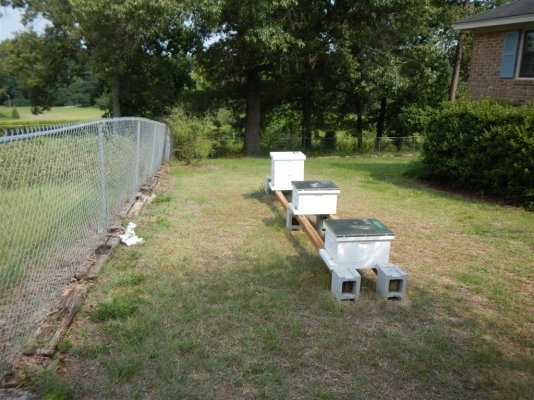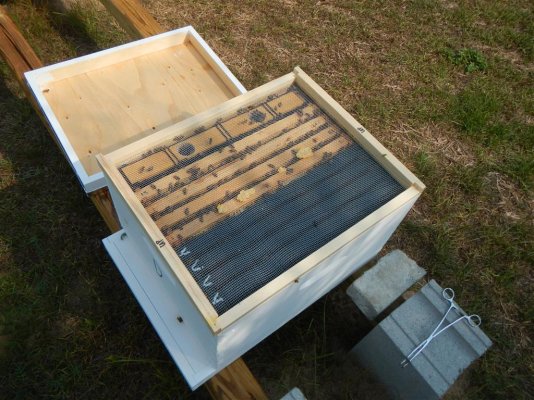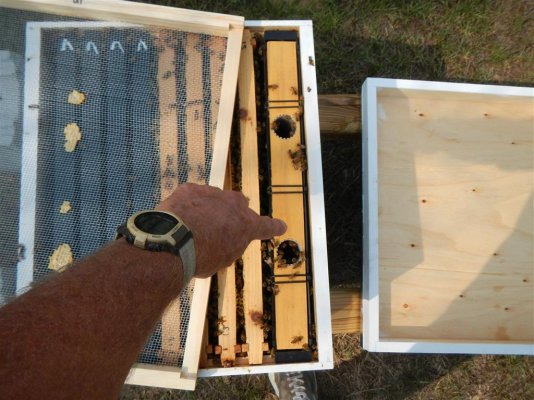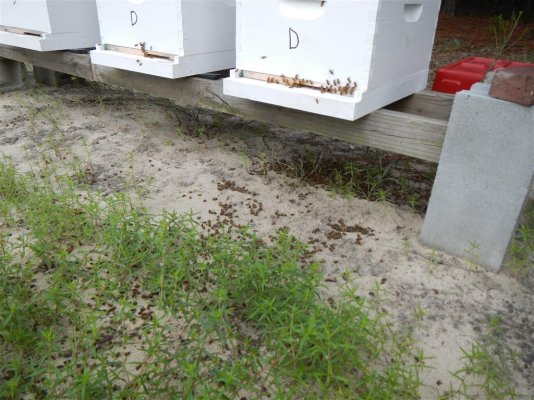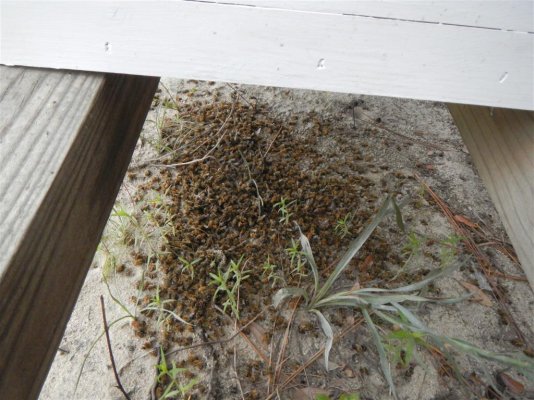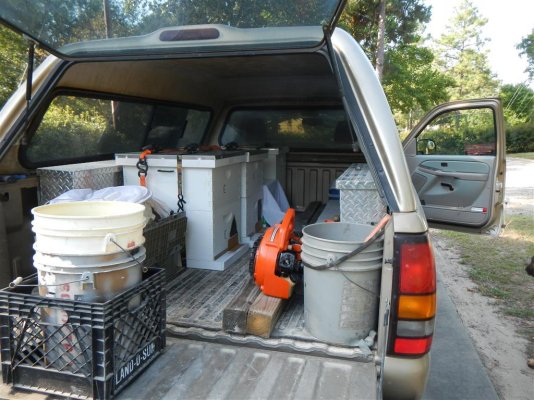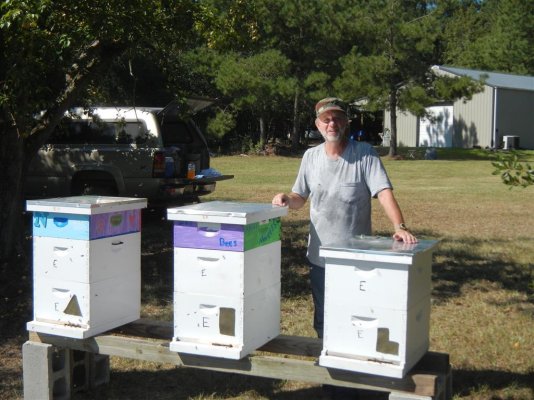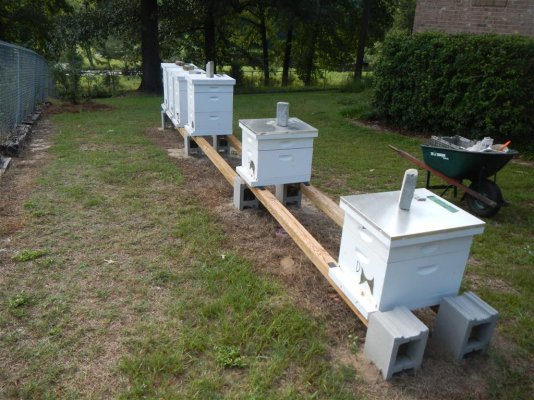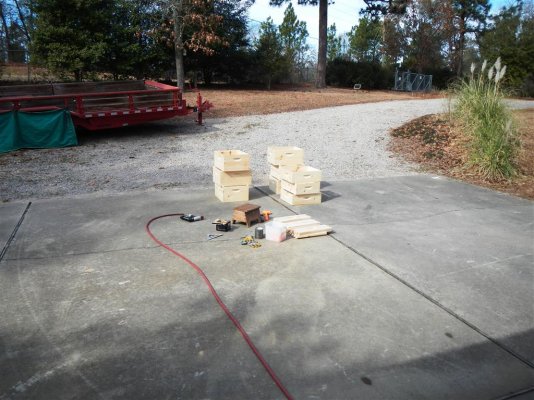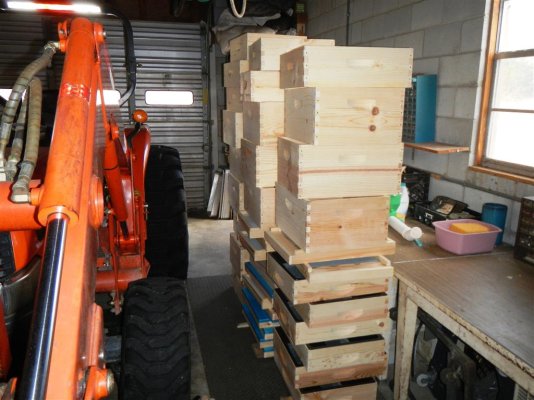brewer12345
Give me a museum and I'll fill it. (Picasso) Give me a forum ...
- Joined
- Mar 6, 2003
- Messages
- 18,085
I got into the hive today. Last time I had put a honey super on top, but the bees really did not touch it. A week ago I pulled the queen excluder to encourage the bees to get up in there. Today there were plenty of bees in the super and they were drawing comb on all 8 frames and they seemed to be shoving nectar into the comb as fast as they can draw it. I looked only at the top brood box and it was jam packed with capped honey, uncapped honey, larvae, capped brood, etc. I think 2 or 3 of the frames were entirely or almost entirely devoted to honey storage. I had a few earwigs in the empty super last time and they are gone. Things look really good. We will be travelling for 3 weeks before the summer ends and I hope they do well while I am away. I am guessing I will be tossing at least one empty super on top of the hive before I leave at this rate.

